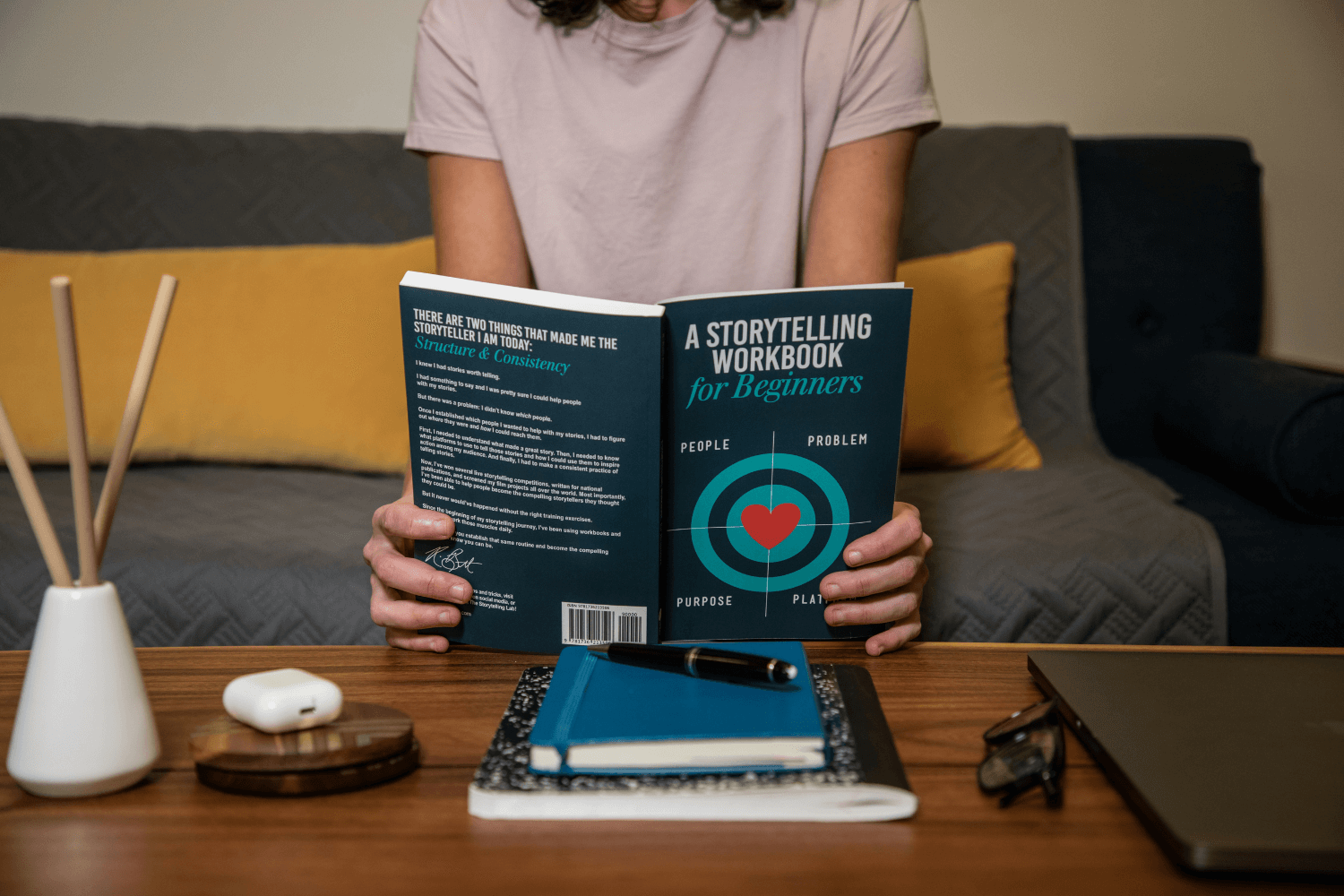Biggest Red Flags in a Student Portfolio (and How to Fix Them)
Your portfolio might be holding you back—and not because you’re not talented. From clunky layouts to missing context, small mistakes can send the wrong signal to recruiters. This guide breaks down the biggest red flags in student portfolios and shows you how to fix them—fast.

So you’ve got a creative portfolio. Cool. But… is it actually working?
Here’s the truth: student portfolios don’t get overlooked because the creator isn’t talented. They flop because of small, fixable mistakes that quietly say “not ready yet.” And during job season, when recruiters are looking at 50+ books before lunch? Those tiny mistakes hit extra hard.
The good news? You can totally turn things around. We're breaking down the biggest portfolio red flags recruiters actually care about, why they matter, and how to course-correct like a pro. Plus, if you're feeling stuck, book180 is here to help you spot the weak spots and polish your book ✨.
Let’s dive into the creative portfolio don’ts that are secretly holding you back—and how to fix them fast.
What Makes Recruiters Bounce: 7 Red Flags That Sink Portfolios
Let’s set the scene: a recruiter clicks your link, skims your homepage, and 15 seconds later, they’re ✌️out. Not because you’re not talented. But because one (or more) of these common portfolio mistakes gave them whiplash.
Let’s talk portfolio red flags 👇
1) Visual Whiplash
Imagine a homepage that’s just….confusing. Too many fonts and colors can make a book feel chaotic, rather than curated. A clunky site that’s hard to navigate, and suddenly recruiters are like, “Next.” Poor UX makes the work hard to navigate. Plus - if you haven’t clearly put your name and title on the homepage, recruiters won’t know what job you’re applying for.
🛠️ Quick Fix:
Pick a design system—type, colors, layouts—and stick with it. Your portfolio should feel like you, not 5 people fighting for control of the Canva doc.
2) “What’s the Brief?”
If your project doesn’t explain what you were solving for, how will anyone understand your thinking?
Missing or super vague problem statements are a top pet peeve for recruiters. Like, what even was the goal? Was there a target audience? A case study with no context is basically just... a mood board.
🛠️ Quick Fix:
Add a short, clear and conversational intro to every project. Try this 2 structure: “The problem the brand faced was [blank], so we decided to [blank].” Boom 💥. Now we know what you were trying to do and how you thought it through.
3) More Isn’t More
15 projects in one book? Too many projects with too little substance isn’t great.
Recruiters aren’t grading you on how many campaigns you’ve crammed in. They want to see depth, not clutter. A few strong, well-thought-out ideas beat a million half-baked ones every time. If a recruiter only clicks on 3 projects, you want to make sure it wasn’t one of your weaker ideas!
🛠️ Quick Fix:
Curate 5–6 great campaigns that you go deep on. Think of it like your highlight reel—not your entire camera roll.
4) No Personality
If your portfolio feels like a PowerPoint from 2012, with zero sense of who you are or how you think... yeah, recruiters notice. Avoid vanilla “About Me” pages at all costs. They just don’t cut it. Add in videos! Add in fun facts! What fills your creative cup? Love to draw? Awesome! Let’s see a section with your sketches!
🛠️ Quick Fix:
Tell us a story. Give us a vibe. Use your “About Me” to show your personality, not just your LinkedIn bio. Add captions, commentary, WIPs, whatever—make your book feel alive. That’ll help you avoid a bunch of common advertising portfolio errors right off the bat. Your book should be fun and unique for a recruiter to go through!
5) Dusty or Half-Done Work
We’re talking old class assignments that haven’t been touched in a year. Or great ideas displayed in just 1 or 2 print ads. Or worse—work with spelling mistakes! Go through your work with a fine tooth comb for grammar edits. And the more executions that you can show for a big idea, the easier it is to see it come to life! Put each execution in the order that a customer would interact with it in the real world.
Even if the idea is strong, if there are too few examples of how it would come to life, it’ll get skipped. Your work needs to feel like it could be part of a professional agency presentation.
🛠️ Quick Fix:
Audit your portfolio every few months. Update or retire old work. If it’s not finished, don’t include it yet. And if you have a small campaign you did for school or an internship, you can always add more spec work to it down the road. This is one of the most common portfolio red flags—and it’s so easy to fix.
6) Wait, What Did You Do?
Recruiters need to know your role in the project. Were you the art director? The copywriter? The strategist? It helps a lot if your role in that project ladders up to the role you’re applying for.
Agencies want collaborators. No credits = confusion = your work gets passed over.
🛠️ Quick Fix:
Add a line under each campaign that links out to your partners “Partnered with [Name] on art direction, [Name] on copywriting.” Give credit! It helps recruiters know what your lane was.

Why These Mistakes Matter More Than You Think
When agencies are getting 300+ applicants for one role, these mistakes carry a lot of weight. Let’s talk about it.
Trust Is Everything
Sloppy portfolios = “Will this person miss details with client work too?”
That’s the lore, and recruiters live by it. Your portfolio is basically your reputation. Even the little mistakes make it hard to trust a new hire with client budgets and brand voice. This is one of those advertising portfolio errors that has real-world consequences.
If It’s Hard to Read, It’s Easy to Ignore
Your brilliance shouldn’t be buried under chaos. No one has time for that these days. If someone has to work to understand your book, they’ll just click out.
You’re Probably Better Than Your Book Shows
Most students have better ideas than their portfolio lets on. A portfolio that doesn’t reflect your best ideas absolutely masks your talent. A few strategic tweaks can take you from a novice to industry-ready fast. You just need to know what to fix.
How to Turn a So-So Book Into a Strong One
Now for the fun part: here’s how to glow up your portfolio without a full restart.
✍️ Rewrite Your Case Study Intros
Use a consistent format—remember, think: Here was the problem, and here’s what we created to fix it. Keep it short, clear, and in your own voice. We wanna know what you thought—not just what happened.
🎨 Pick a Style—and Stick With It
Unify your fonts, colors, formatting, and layout. It doesn’t have to be fancy. Just cohesive. That alone can make your portfolio feel 10x cleaner and come across as professional.
✨Curate Like a Creative Director
Your weakest piece brings down the whole portfolio. Time to kill your darlings. (Sorry!)
🧠 Show Your Thinking, Not Just the Output
For designers and art directors - drop in behind-the-scenes sketches. Or pictures of you creating the work. Strategy slides are also great. Let us see how you work. You’re not just a creator, you’re a thinker—and your portfolio should reflect that. This one’s a go-to for anyone seeking real student portfolio tips.
🤖 If You Used AI, Say So
Transparency isn’t just ethical—it also shows you know how to use modern tools smartly. Recruiters respect that. Own it.
If you aren’t using new technologies and innovative mediums in your portfolio, it could be a disadvantage when trying to stand out.

Not Sure What to Fix? Here’s When to Get a Second Opinion
Sometimes your portfolio gives “almost there” vibes and you don’t even know what’s off. That’s when a second set of eyes can change the game.
🚩 You Might Have Red Flags If…
- You’re not getting replies from applications.
- Everyone says “Looks good!” but no one gives real notes.
- Your vibe = confused but hopeful.
Sound familiar? These could be sneaky portfolio red flags flying under your radar. It’s not you, it’s your portfolio. And we can help.
✅ What You’ll Get From Pro Feedback
- A clear roadmap of what to improve (and why)
- Fresh eyes from people who actually work in the industry
- A clearer sense of how your work stacks up in the job market
Get clarity on what’s working, what’s not, and why.
💬 How book180 Critiques Actually Work
You’ll get a detailed, honest, constructive critique from worldwide industry professionals who’ve been where you are—and knows what gets you hired.
We’re not here to roast. We’re here to refine. You get strategic edits, honest insights, a push in the right direction, and support. It’s affordable, friendly, and focused on making your work stronger, not “perfect.”
Final Thoughts: A Few Fixes Can Take You a Long Way
With a few fixes, your book can be flawless. Everyone’s book will be different, it just needs to make sense, and show who you are, what you can do, and how you think.
Fix what’s holding it back. Cut the clutter. Tighten the storytelling. Add you into the mix. Don’t be afraid to ask for help. We’ll help you avoid the creative portfolio dont’s, spot the portfolio red flags, and find your spark 💖.
Ready for honest, actionable feedback? Whether you’re looking for your first job in advertising or refining your book for that next big move, expert feedback is your secret weapon—and we can help you get it right. As a west coast portfolio school and east coast portfolio school with national reach, book180 specializes in getting students from “almost ready” to actually hired.







